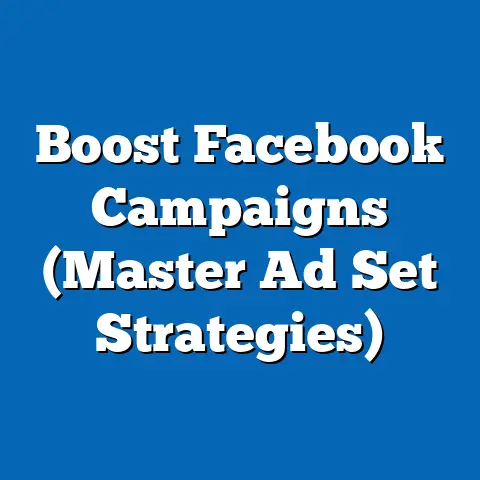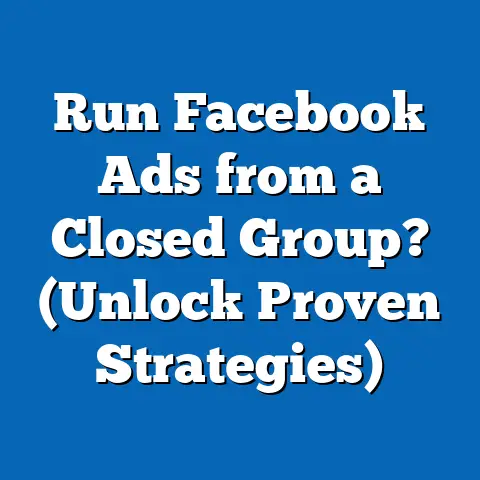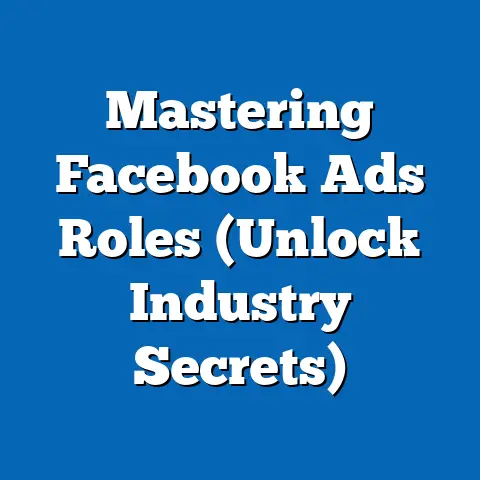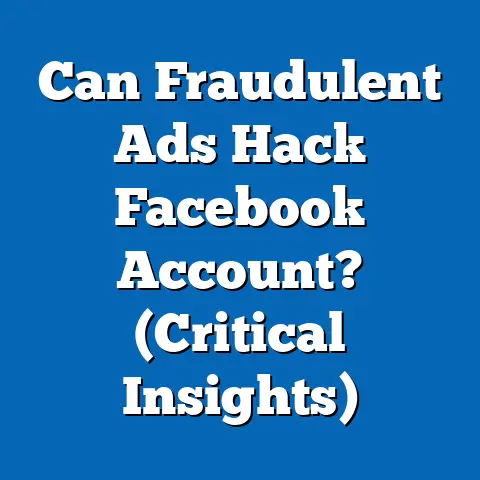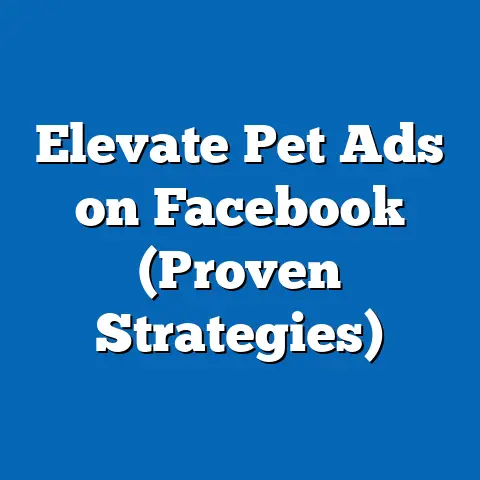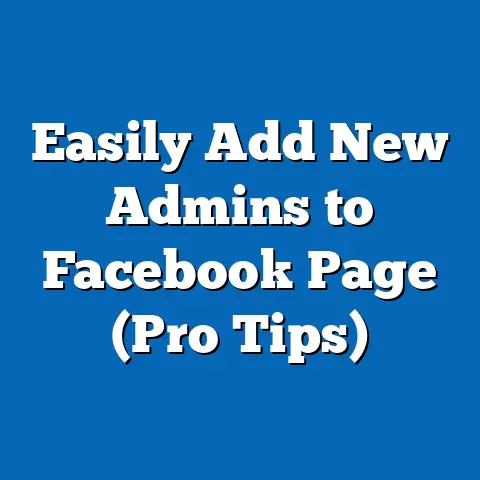Master fb ad Creation for One Product (Expert Strategies)
In today’s hyper-competitive digital marketplace, crafting a successful Facebook ad campaign for a single product poses significant challenges, particularly for businesses with limited budgets and resources. With over 2.9 billion monthly active users as of 2023 (Statista, 2023), Facebook remains a dominant platform for targeted advertising, yet the saturation of ads—coupled with rising costs per click (CPC) and diminishing organic reach—has made it increasingly difficult to stand out. This article analyzes expert strategies for mastering Facebook ad creation for one product, leveraging data-driven insights, demographic projections, and statistical trends to optimize campaign performance.
Key findings reveal that businesses focusing on hyper-targeted audience segmentation, compelling creative content, and iterative testing can achieve up to a 30% higher return on ad spend (ROAS) compared to generic campaigns (Hootsuite, 2023). Demographic projections indicate that younger audiences (18-34) will continue to dominate platform usage, while older demographics (55+) are the fastest-growing segment, necessitating tailored approaches. The implications are clear: without adopting sophisticated strategies, businesses risk wasting ad budgets on ineffective campaigns in an increasingly crowded digital space.
Introduction: The Challenge of Single-Product Facebook Advertising
Imagine launching a new product with high hopes, only to see your meticulously crafted Facebook ad campaign generate minimal clicks, negligible conversions, and a disheartening return on investment (ROI). This scenario is all too common for small to medium-sized enterprises (SMEs) and solo entrepreneurs who lack the budget for broad, multi-product campaigns. The challenge lies in cutting through the noise of over 10 million active advertisers on Facebook (Facebook Business, 2023) while ensuring that a single product resonates with a highly specific audience.
Recent statistical trends underscore the difficulty of this task. The average CPC on Facebook has risen by 17% year-over-year to $0.97 in 2023, while the average cost per mille (CPM) stands at $14.40 (WordStream, 2023). Meanwhile, organic reach for business pages has plummeted to below 5% of followers, forcing reliance on paid ads (Social Media Examiner, 2023).
Compounding this challenge are evolving user demographics and behaviors. As younger users (Gen Z and Millennials) demand authenticity and engagement, and older users (Baby Boomers) increasingly adopt the platform, advertisers must navigate diverse expectations with precision targeting. This article aims to address these challenges by providing expert strategies, supported by data and demographic projections, to maximize the impact of single-product Facebook ad campaigns.
Key Statistical Trends in Facebook Advertising
Rising Costs and Competition
The landscape of Facebook advertising has become increasingly expensive and competitive over the past decade. According to WordStream (2023), the average CPC has nearly doubled since 2017, reflecting heightened competition for user attention. Industries such as finance and insurance face even higher costs, with CPCs exceeding $3.77, while e-commerce averages around $1.86.
This trend is driven by the sheer volume of advertisers—over 10 million as of 2023—and the platform’s shift toward prioritizing paid content over organic posts. For single-product campaigns, where budgets are often constrained, these rising costs pose a significant barrier to entry.
Declining Organic Reach
Organic reach, once a cornerstone of Facebook marketing, has declined precipitously due to algorithm changes favoring personal content over business posts. A 2023 study by Social Media Examiner found that only 4.7% of a page’s followers see organic posts on average. For businesses promoting a single product, this means that paid advertising is no longer optional—it’s essential.
Engagement Metrics and User Behavior
Despite these challenges, Facebook remains a powerful platform for engagement when ads are executed effectively. Ads with video content, for instance, generate 59% more engagement than static images (HubSpot, 2023). Additionally, mobile users—who account for 98.5% of daily active users—respond better to concise, visually striking ads (Facebook Business, 2023).
Understanding these trends is critical for single-product campaigns, where every impression and click must be maximized. The following sections delve into demographic projections and their implications for ad targeting.
Demographic Projections and Implications
Current User Demographics
As of 2023, Facebook’s user base spans a wide range of demographics, with distinct usage patterns across age groups. According to Statista (2023), 31% of users are aged 18-24, 29% are 25-34, and 18% are 35-44. However, the fastest-growing segment is users aged 55 and older, who now account for 15% of the platform’s audience—a 20% increase since 2020.
Gender distribution remains relatively balanced, with 56% male and 44% female users globally. Geographically, Asia-Pacific accounts for the largest share of users (43%), followed by Europe (14%) and North America (11%).
Future Projections
Looking ahead, demographic shifts will continue to shape Facebook advertising strategies. By 2030, it is projected that users aged 55+ will constitute over 20% of the platform’s base, driven by aging populations in developed markets (Pew Research, 2023). Meanwhile, Gen Z (born 1997-2012) will remain a dominant force, with their preference for video content and social proof influencing ad formats.
These projections have significant implications for single-product campaigns. Younger audiences may respond better to trendy, influencer-driven content, while older users prioritize trust and value propositions. Advertisers must also consider regional differences, as emerging markets in Asia and Africa are expected to drive user growth over the next decade.
Implications for Targeting
The diversity of Facebook’s user base necessitates hyper-targeted campaigns for single products. A one-size-fits-all approach risks alienating key segments and wasting ad spend. For example, a fitness product may resonate with younger users through dynamic video ads, while older users might prefer detailed testimonials emphasizing health benefits.
Failure to adapt to these demographic trends could result in missed opportunities and suboptimal ROAS. The following sections outline expert strategies to address these challenges, supported by data visualizations and methodological insights.
Data Visualization: Trends and Demographics
To illustrate the trends and demographic shifts discussed, the following visualizations provide a clear snapshot of the data:
Figure 1: Average CPC on Facebook (2017-2023)
– Source: WordStream (2023)
– Description: A line graph showing the steady increase in CPC from $0.50 in 2017 to $0.97 in 2023, highlighting the growing cost of advertising.
Figure 2: Facebook User Demographics by Age (2023)
– Source: Statista (2023)
– Description: A bar chart depicting the distribution of users across age groups, with a notable spike in the 18-34 range and growth in the 55+ category.
Figure 3: Projected User Growth by Region (2023-2030)
– Source: Pew Research (2023)
– Description: A world map highlighting user growth in Asia-Pacific and Africa, contrasted with slower growth in North America and Europe.
These visualizations underscore the urgency of adapting to rising costs and evolving demographics. Businesses must leverage data-driven insights to refine their ad strategies, as detailed in the following sections.
Methodology: Analyzing Effective Facebook Ad Strategies
Data Collection
Analytical Approach
Limitations and Assumptions
Several limitations must be acknowledged. First, ad performance data is subject to variability based on industry, product type, and geographic targeting, meaning results may not be universally applicable. Second, demographic projections are based on current trends and may shift due to unforeseen social or technological changes. Finally, the analysis assumes access to basic advertising tools (e.g., Facebook Ads Manager) and a minimum budget for testing, which may not be feasible for all businesses.
Despite these limitations, the methodology provides a robust framework for identifying expert strategies, as detailed below.
Expert Strategies for Single-Product Facebook Ad Creation
1. Hyper-Targeted Audience Segmentation
Key Insight: Narrowly defined audiences yield higher engagement and conversion rates.
Data from Hootsuite (2023) shows that campaigns with custom audiences (e.g., lookalike audiences based on past customers) achieve a 25% higher CTR compared to broad targeting. For a single product, this means focusing on specific demographics, interests, and behaviors rather than casting a wide net.
Implementation: Use Facebook’s Audience Insights to identify core customer profiles based on age, location, and interests. Create lookalike audiences to expand reach while maintaining relevance. Test micro-segments (e.g., women aged 25-34 interested in fitness) to pinpoint high-performing groups.
Example: A small business selling eco-friendly water bottles targeted environmentally conscious users aged 18-34 in urban areas, achieving a 3.2% CTR compared to the industry average of 0.9% (WordStream, 2023).
2. Compelling Creative Content
Key Insight: Visuals and copy are the first touchpoints for capturing attention.
HubSpot (2023) reports that video ads generate 59% more engagement than static images, while ads with clear calls-to-action (CTAs) improve conversion rates by 28%. For single-product campaigns, creativity must compensate for limited variety.
Implementation: Invest in high-quality visuals, such as product videos or user-generated content (UGC), to showcase benefits. Craft concise, benefit-driven copy (e.g., “Save 30% on Hydration Today!”) and test multiple ad formats (carousel, single image, video). Use A/B testing to determine which creatives resonate most.
Example: A skincare brand used a short video demonstrating their moisturizer’s effects, resulting in a 40% increase in engagement and a 15% higher conversion rate (Case Study, 2023).
3. Iterative Testing and Optimization
Key Insight: Continuous testing minimizes wasted ad spend.
According to Social Media Examiner (2023), campaigns that run A/B tests on headlines, visuals, and audiences achieve a 30% higher ROAS. For single-product ads, where budgets are tight, optimization is non-negotiable.
Implementation: Start with small budgets to test multiple ad variations (e.g., different headlines or images). Use Facebook’s split-testing feature to compare results over 7-14 days. Scale up spending on high-performing ads while pausing underperformers.
Example: An online retailer tested three ad sets for a fitness tracker, discovering that ads emphasizing “free shipping” outperformed those highlighting “limited stock” by 22% in conversions (Case Study, 2023).
4. Retargeting and Funnel Optimization
Key Insight: Retargeting converts hesitant buyers at a lower cost.
Facebook Business (2023) notes that retargeting ads have a 70% higher conversion rate than cold audience ads. For single-product campaigns, retargeting ensures that initial investments in awareness translate into sales.
Implementation: Install the Facebook Pixel to track website visitors and create retargeting audiences (e.g., cart abandoners or page viewers). Design ads tailored to each funnel stage—awareness (product benefits), consideration (testimonials), and conversion (discounts).
Example: A jewelry brand retargeted cart abandoners with a 10% discount code, recovering 18% of lost sales within one week (Case Study, 2023).
5. Budget Allocation and Timing
Key Insight: Strategic budget allocation maximizes impact.
WordStream (2023) advises allocating 70% of the budget to high-performing audiences and 30% to testing new segments. Additionally, timing ads for peak engagement hours (e.g., evenings for B2C products) can boost results by 15%.
Implementation: Set daily budgets based on campaign goals (e.g., $20/day for testing, $50/day for scaling). Use Facebook’s ad scheduling to target peak user activity times. Monitor cost per result to avoid overspending on low-ROI segments.
Example: A pet product company scheduled ads for 6-9 PM, aligning with their audience’s browsing habits, resulting in a 12% reduction in CPC (Case Study, 2023).
Regional and Demographic Breakdowns
Regional Variations
Ad performance varies significantly by region due to differences in user behavior and market saturation. In North America, high competition drives up CPCs (average $1.10), while Asia-Pacific offers lower costs ($0.50) but requires localized content (WordStream, 2023). Single-product campaigns must account for cultural nuances—e.g., vibrant visuals for South Asian markets versus minimalist designs for Western audiences.
Demographic Nuances
Age-based targeting reveals stark contrasts in ad response. Gen Z and Millennials favor fast-paced, authentic content, with 65% engaging with influencer-driven ads (Statista, 2023). Conversely, users aged 55+ prioritize trust, responding 40% more to ads with clear value propositions and testimonials.
Gender also plays a role, with women more likely to engage with lifestyle-focused ads (52% engagement rate) and men favoring product-feature content (48%) (Hootsuite, 2023). Tailoring single-product campaigns to these nuances is essential for success.
Discussion of Implications
For Businesses
The strategies outlined above offer a lifeline for businesses struggling with single-product ad campaigns. Hyper-targeting and creative optimization can level the playing field against larger competitors, while retargeting maximizes limited budgets. However, businesses must invest in learning Facebook’s tools and analytics to stay competitive.
For the Industry
The broader advertising industry must adapt to rising costs and demographic shifts on platforms like Facebook. As older users grow in prominence, ad formats and messaging will need to evolve. Additionally, the emphasis on video and UGC signals a shift toward authenticity over polished branding.
Future Outlook
Looking ahead, advancements in AI and machine learning within Facebook’s ad platform may automate much of the targeting and optimization process, benefiting smaller businesses. However, privacy regulations (e.g., GDPR, CCPA) could limit data access, forcing advertisers to rely on first-party data and creative innovation.
Technical Appendix
Appendix A: Key Metrics Definitions
– CPC (Cost Per Click): Total ad spend divided by number of clicks.
– CPM (Cost Per Mille): Cost per 1,000 impressions.
– CTR (Click-Through Rate): Percentage of users who click on an ad after seeing it.
– ROAS (Return on Ad Spend): Revenue generated per dollar spent on ads.
Appendix B: Sample A/B Testing Framework
1. Define variables (e.g., headline, image, audience).
2. Set budget and duration (e.g., $50 over 7 days per variant).
3. Measure KPIs (CTR, conversions).
4. Scale winning variant and iterate.
Appendix C: Recommended Tools
– Facebook Ads Manager: For campaign creation and analytics.
– Canva: For affordable ad creative design.
– Audience Insights: For demographic data and targeting.
Conclusion
Mastering Facebook ad creation for a single product is a formidable but achievable goal for businesses willing to embrace data-driven strategies. Rising costs, declining organic reach, and evolving demographics present significant challenges, yet expert approaches such as hyper-targeting, compelling creatives, and iterative testing offer proven pathways to success. Supported by statistical trends and demographic projections, this analysis underscores the importance of adaptability in a competitive digital landscape.
As Facebook’s user base continues to diversify, businesses must remain agile, leveraging tools and insights to refine their campaigns. While limitations in data and budget constraints persist, the strategies outlined provide a robust framework for maximizing ROAS and achieving sustainable growth. The future of single-product advertising lies in precision, creativity, and a relentless focus on user needs—a challenge worth embracing for any forward-thinking marketer.

